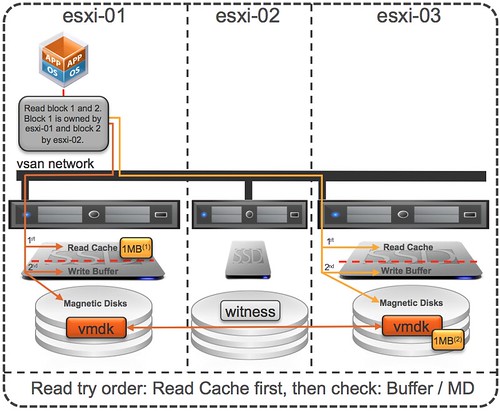 I have been working on a slidedeck lately that explains how to build a hyper-converged platform using VMware technology. Of course it is heavily focusing on Virtual SAN as that is one of the core components in the stack. I created the slidedeck based on discussions I have had with various customers and partners who were looking to architect a platform for their datacenters that they could easily repeat. A platform which had a nice form factor and allowed them to scale out and up. Something that could be used in a full size datacenter, but also in smaller SMB type environments or ROBO deployments even.
I have been working on a slidedeck lately that explains how to build a hyper-converged platform using VMware technology. Of course it is heavily focusing on Virtual SAN as that is one of the core components in the stack. I created the slidedeck based on discussions I have had with various customers and partners who were looking to architect a platform for their datacenters that they could easily repeat. A platform which had a nice form factor and allowed them to scale out and up. Something that could be used in a full size datacenter, but also in smaller SMB type environments or ROBO deployments even.
I guess it makes sense to start with explaining what hyper-converged means to me, although I already wrote various articles on this topic a while back. I explicitly say “to me” as I am sure many folks will have a different opinion on this. A hyper-converged platform is an appliance type of solution where a single box provides a platform for virtual machines. This box typically contains multiple generic x86 hosts (trying to avoid using the word commodity) on which a hypervisor is installed, local storage which is aggregated in to a large shared pool, and network ports. Note that typically network switching is not included in the box itself, well except for virtual switches. In order to aggregate storage in to a large shared pool an additional piece of software is required. Typical examples of hyper-converged platforms which are out there today are Nutanix, SimpliVity and Pivot .
The question than arises if these are “just” x86 boxes with hypervisors installed and storage software, what are the benefits over a regular environment? Those benefits in my opinion are:
- Time to market is short, < 4hrs to install / deploy (probably much faster for the majority)
-
Easy of management and integration
-
Scale out, both capacity and performance wise
-
Typically more affordable (results will vary)
Sounds like a done deal right? Easier, cheaper and faster… It is fair to say that these are great solutions for many companies as they provide you with one throat to choke. With that meaning it is a single SKU offering and which includes a single point of contact for support in most cases. Only downside I have heard from some partners and customers is that these solutions are typically tied to hardware and specific configurations, which is not always the same as your preferred supplier and probably not the exact configuration you prefer. This could lead to operational challenges when it comes to updating / patching, which probably doesn’t make the operational team happy. On top of that there is the “trust” issue. Some people swear by HP and would never ever want to touch any other brand, while others won’t come close to it. That is a matter of experience and personal taste I guess. Where is all of this leading to? Well here is, in my opinion, where Virtual SAN / VSAN comes in. [Read more…] about Building a hyper-converged platform using VMware technology part 1
 Over a week ago
Over a week ago 